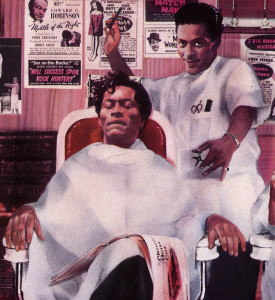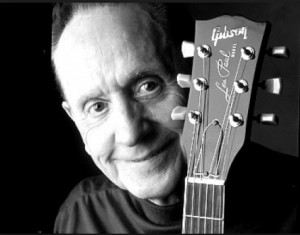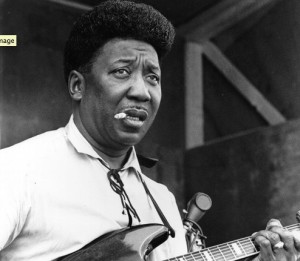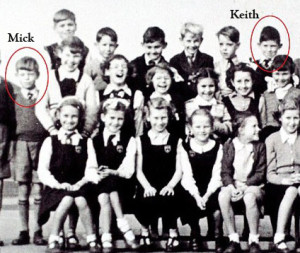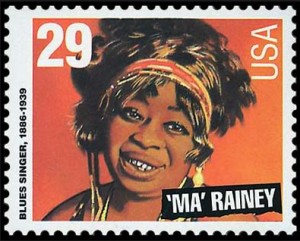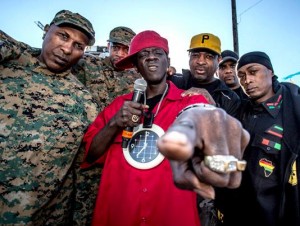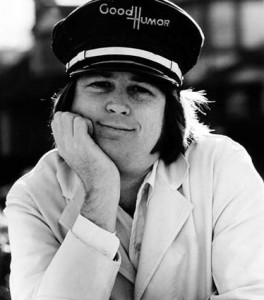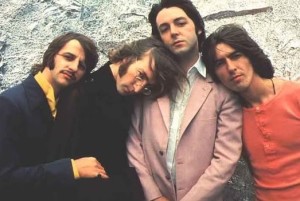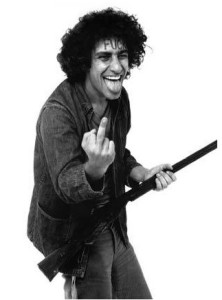 Attention: this is an important history lesson for all you sweet young things born after the baby boom! The subject is Abbie Hoffman, who died 25 years ago today. He was one of the most colorful pranksters and political activists of the 1960s, and a hero to many. He was a founder of the Youth International Party (Yippies) and one of the “Chicago Seven,” a group arrested for conspiracy and inciting a riot during the 1968 Democratic National Convention. His outlandish behavior inspired many to become politically active, question authority and protest the Vietnam war. What an adorable little bad-ass Jew!
Attention: this is an important history lesson for all you sweet young things born after the baby boom! The subject is Abbie Hoffman, who died 25 years ago today. He was one of the most colorful pranksters and political activists of the 1960s, and a hero to many. He was a founder of the Youth International Party (Yippies) and one of the “Chicago Seven,” a group arrested for conspiracy and inciting a riot during the 1968 Democratic National Convention. His outlandish behavior inspired many to become politically active, question authority and protest the Vietnam war. What an adorable little bad-ass Jew!
The Nixon government considered him a subversive, due to his association with such controversial groups as the Black Panthers, the Student Nonviolent Coordinating Committee (SNCC) and the Socialist Workers Party (SWP). His FBI file consisted of over 13,000 pages.
One of his grand symbolic stunts involved taking a group of Yippie followers to the New York Stock Exchange in 1967, where they tossed both real and phony dollars from the gallery, amusing themselves as traders went wild trying to catch the falling bills. No one in Hoffman’s entourage even thought to alert the press ahead of time, but the story spread like wildfire through the media. As a result of the prank, the NYSE spent $20,000 to enclose the gallery with bulletproof glass.
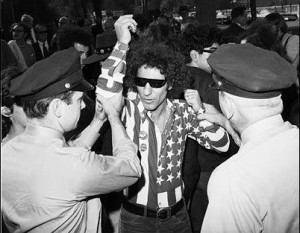 Another of his capers involved leading a group of war protestors to the Pentagon, only to find that a throng of soldiers had formed a human chain to prevent them from nearing the building. Abbie suggested the use of psychic energy to levitate the Pentagon until it turned bright orange and began to vibrate – thus bringing the Vietnam war to an end. Allen Ginsberg was on hand to lead the crowd in Tibetan chants. Oh, what a time!
Another of his capers involved leading a group of war protestors to the Pentagon, only to find that a throng of soldiers had formed a human chain to prevent them from nearing the building. Abbie suggested the use of psychic energy to levitate the Pentagon until it turned bright orange and began to vibrate – thus bringing the Vietnam war to an end. Allen Ginsberg was on hand to lead the crowd in Tibetan chants. Oh, what a time!
The courtroom trial of the Chicago Seven was like a scene from a Marx Brothers movie. Abbie and fellow defendant Jerry Rubin wore judicial robes to court one day. As Abbie was being sworn in, he managed to flash the finger while his hand was on the bible. When asked to give his state of residence, he replied, “the state of mind of my brothers and sisters.” He led his codefendants in daily harassments of Judge Julius Hoffman (no relation). Abbie told the judge, “you are a ‘shande fur de Goyim’ [disgrace in front of the gentiles]. You would have served Hitler better.” During the trial he repeatedly called the judge “Julie,” and even suggested he try LSD, promising to set him up with a dealer in Florida.
 Abbie and four of his codefendants – Rubin, David Dellinger, Rennie Davis, and Tom Hayden (who later married Jane Fonda after their controversial jaunt to North Vietnam in 1972) – were found guilty of “intent to incite a riot while crossing state lines.” They were fined $5,000 and sentenced to five years in prison, but the convictions were later overturned when a commission ruled that a “police riot” caused the violent clashes at the Democratic convention.
Abbie and four of his codefendants – Rubin, David Dellinger, Rennie Davis, and Tom Hayden (who later married Jane Fonda after their controversial jaunt to North Vietnam in 1972) – were found guilty of “intent to incite a riot while crossing state lines.” They were fined $5,000 and sentenced to five years in prison, but the convictions were later overturned when a commission ruled that a “police riot” caused the violent clashes at the Democratic convention.
When Abbie was convicted for wearing a shirt resembling the American flag – which police had torn from his back – he announced, Nathan Hale-style, “I only regret that I have but one shirt to give for my country.” (To make matters worse, he had a Viet Cong flag painted on his back.)
Through the years Abbie continued to stir things up. He jumped on stage while The Who were performing at Woodstock, and delivered an LSD-fueled message: “I think this is a pile of shit while [militant counterculture leader] John Sinclair rots in prison.” Pete Townshend charged at him, whacking him with his guitar for violating the “sanctity of the stage.” (Townshend denied striking him; accounts vary.)
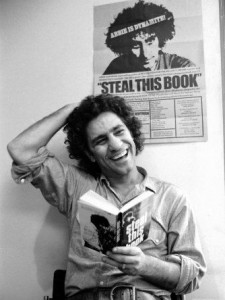 In 1973, police nabbed Abbie for “intent to sell and distribute cocaine.” Maintaining that he was framed, he skipped bail, underwent plastic surgery and went into hiding, finally surrendering in 1980 (he served a four month sentence). In 1986, he (along with President Carter’s daughter Amy) was arrested for trespassing during a protest of CIA actions on the campus of the University of Massachusetts at Amherst.
In 1973, police nabbed Abbie for “intent to sell and distribute cocaine.” Maintaining that he was framed, he skipped bail, underwent plastic surgery and went into hiding, finally surrendering in 1980 (he served a four month sentence). In 1986, he (along with President Carter’s daughter Amy) was arrested for trespassing during a protest of CIA actions on the campus of the University of Massachusetts at Amherst.
Along the way, he authored the wildly popular guide to political activism, “Steal This Book,” and, with Jonathan Silvers, co-authored “Steal This Urine Test,” which exposed the flaws in the government’s war on drugs.
As the Reagan ’80s progressed, Abbot Howard Hoffman remained active in social causes, but was battling bi-polar disorder and no doubt bemoaning the lack of activism among young people. On April 12, 1989, at age 52, he washed down 150 phenobarbital tablets with liquor. Some say it was an unintentional overdose, but swallowing 150 pills does require some effort on the part of even the most experienced aficionado. It was ruled a suicide.
Abbie would have approved of the eulogy delivered by Rabbi Norman Mendell, who said that his activism and rabble-rousing were in keeping with “the Jewish prophetic tradition, which is to comfort the afflicted and afflict the comfortable.”
Now, let’s all steal THAT philosophy!
“Revolution is not something fixed in ideology, nor is it something fashioned to a particular decade. It is a perpetual process embedded in the human spirit.”
After Abbie told a Chicago city official that he’d take $100,000 to call off the massive demonstration planned for the 1968 Democratic Convention, a reporter asked him if he was serious. Here’s what he said.
By Dana Spiardi, April 12, 2014
]]>
I am thankful…
That Woody Guthrie crusaded for the common people, inspiring hope and self-respect through his words, wit and wisdom.
That blues great Robert Johnson went down to The Crossroads.
That record producer and civil rights activist John Hammond chucked his aristocratic roots, devoted his life to the racial integration of music, and introduced the white world to delta blues.
That Chuck Berry dropped out of the Poro College of Cosmetology and decided not to become a beautician.
That Leiber met Stoller, that King met Goffin, that Dozier met the Hollands, that Mann met Weil, that Elton met Taupin, that Pomus met Shuman, that Fagan met Becker, that Page met Plant, that Strummer met Jones, that Korner met Davies, that Bowie met Ronson, that Springsteen met Van Zandt, that Greenwich met Barry.
That Radio Luxembourg gave 1950s’ British teenagers their first taste of American rock-n-roll.
That Jim Marshall blew our minds with his mighty amps.
That Les Paul invented the solid body electric guitar.
That Bobby Dylan endured the slings and arrows of the folkies to “go electric.”
That ethnomusicologists John and Alan Lomax devoted their lives to researching, collecting and promoting American folk music.
That Elvis stopped driving that truck, ditched his plans to become an electrician, and ignored everyone who told him NOT to record “Heartbreak Hotel.”
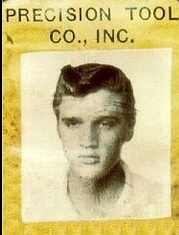
That a 15-year-old Paul McCartney had the balls to audition for a skeptical John Lennon by playing “Twenty Flight Rock” after a church festival in Liverpool on July 6, 1957.
That Phil Spector proved Marcel Proust was right: “Everything great in the world is done by neurotics.”
That close-minded, racist, misogynistic, homophobic, rush-to-war leaders served but one purpose in their narrow lives: to give musicians and artists something to rebel against.
That Muddy Waters nailed it: “The blues had a baby, and they named it rock and roll.”
That cool cats like Gram Parsons had the guts to champion country music in a psychedelic era.
That James Brown taught us to dance….and told his people to say it loud: be black and proud!
That Mick Jagger and Keith Richards just happened to be standing on the same train station platform in October 1961 (Mick carrying R&B albums and Keith toting his guitar), remembered each other from grade school, and realized they had a common obsession.
That David Bowie painted his face, donned an androgynous look, and pushed the boundaries of sexual identity.
That Ma Rainey, Bessie Smith, Big Mama Thornton, Billie Holiday, Etta James, and Sister Rosetta Tharpe proved they could out-wail their blues brothers.
That Jimi Hendrix went to London, and came back to America a star.
That Bruce inspired us to ride out into the night to case the promised land.
That fab ’60s dames like Laura Nyro, Janis Joplin, Tina Turner, Dusty Springfield, Marianne Faithfull, Darlene Love, Mama Cass, and Grace Slick had the balls to throw stones at the glass ceiling of rock and roll.
That punk rockers came along just in time to deconstruct a bloated music world, and make rock fun and frivolous again.
That Johnny Cash turned his angst into art.
That Lou Reed took a walk on the wild side, and embodied the beautiful urban grit of New York City.
That rap and hip-hop artists like Public Enemy, Grandmaster Flash, and Rage Against The Machine inspired us fight the powers that be.
That Max Yasgur let 400,000 hippies camp out on his 600-acre dairy farm in the Catskills for a three-day music festival called Woodstock.
That psych meds and massive amounts of therapy were available to Beach Boy Brian Wilson, who created some other world’s most beautiful music despite a lifelong battle with mental illness.
That the great record producers, managers, recording engineers, and label execs — Ahmet Ertegün, the Chess brothers, Sam Phillips, George Martin, Lou Adler, Clive Davis, Mo Ostin, Jerry Wexler, Jon Landau, Brian Epstein, Berry Gordy, Tom Dowd, Joe Meek, Tom Wilson, Jimmy Miller and David Geffen — knew a good thing when they heard it.
That Sly Stone made us funky.
That Bob Marley turned us on to reggae and the Rastafarian way of life.
That Mary Quant and Vivienne Westwood helped us strut to the beat in style with their fab fashions.
That The Beatles broke up at just the right time – on top and forever unequaled – leaving us all with bittersweet thoughts of what might have been.
That my parents, Fred and Helen Spiardi, encouraged my love of music, let me build a record collection to my heart’s delight, and never criticized my tastes.
Happy Thanksgiving to all who follow my blog! Peace and love, brothers and sisters.
By Dana Spiardi, Nov 27, 2014
The image of Chuck Berry as a barber is by the late Guy Peellaert, from the book “Rock Dreams.”
]]>
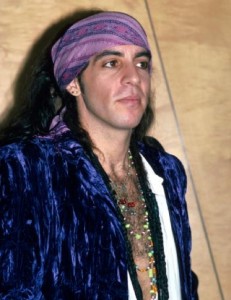 “Who’s the sharpie?” I wondered, as I watched this nattily-dressed guy play guitar on stage with his boss Bruce Springsteen at the Cambria County War Memorial Arena in Johnstown, PA. I hadn’t seen his picture on any of Bruce’s albums. I didn’t even know his name. But I knew at that moment that we were going to be soul mates.
“Who’s the sharpie?” I wondered, as I watched this nattily-dressed guy play guitar on stage with his boss Bruce Springsteen at the Cambria County War Memorial Arena in Johnstown, PA. I hadn’t seen his picture on any of Bruce’s albums. I didn’t even know his name. But I knew at that moment that we were going to be soul mates.
Picture this: he was wearing a white fedora with a red band. I was wearing a red fedora with a white band. He was wearing red pants and platform shoes. I, too, was wearing red pants and platform shoes. Steven’s shirt was white and open-necked under a red vest and jacket. My shirt was white and lacy over a red tank top. Dark eyes, small frame. Yep, he fit the profile, alright. Now, I know how you see him today – all jowly and plumped up from years of eating gabagool and pasta fazool with Tony Soprano in Artie Bucco’s Vesuvius restaurant – and you wonder what I could have possibly seen in this guy.
Well, what I saw for the first time that night in Johnstown actually had more to do with soul than style. Sure, scrawny Bruce and his “Big Man” sax player Clarence Clemons delighted us for over three hours with their onstage cat and mouse clowning, like guileless sons of hip interracial parents. But I had a sense that when the house lights went down and the boys piled into the bus, Stevie was Bruce’s lean-on-me guy. Their on-stage movements were in perfect sync. When they rushed the mic to harmonize, they looked like they’d been practicing that move since they were kids horsing around in Sears Tuffskins jeans. Years later Bruce nailed it: “When we met, I laid eyes on him and I knew that this was the guy who drank the same Kool-Aid that I had.”
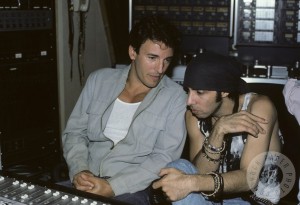 Bruce and Stevie met in the late ’60s when they were making their bones in any number of odd bands that played the Jersey shore bars. Steven began honing his chops as a songwriter, arranger and producer when he formed Southside Johnny and the Asbury Jukes (with John Lyon as frontman). He infused the group’s music with his love and knowledge of soul and R&B, turning the Jukes into a first class wall-of-sound horn band.
Bruce and Stevie met in the late ’60s when they were making their bones in any number of odd bands that played the Jersey shore bars. Steven began honing his chops as a songwriter, arranger and producer when he formed Southside Johnny and the Asbury Jukes (with John Lyon as frontman). He infused the group’s music with his love and knowledge of soul and R&B, turning the Jukes into a first class wall-of-sound horn band.
Soon, Bruce was seeking Steve’s skills in the studio, as well. He was partially responsible for developing the signature riff on “Born to Run,” and arranged the horn parts on “Tenth Avenue Freeze Out.” He was ready to become a full-time E Streeter, nicknamed “Miami Steve” for his dislike of cold weather. He joined Bruce’s long-running “Born to Run” tour in 1975 and (progressing from fedoras to berets to babushkas) remained with the band until 1984, when he embarked on a career as a solo artist and activist. (We die-hard disciples of the Bruce-Steven brotherhood know in our hearts that The Boss wrote the androgynous “Bobby Jean” as a farewell song to the guitarist when he left the band: There ain’t nobody nowhere nohow gonna ever understand me the way you did.)
Calling his group Little Steven and the Disciples of Soul, he went on to release five albums, the first of which, “Men Without Women,” was the best received. A five-piece horn section coupled with a bombardment of searing guitars provide a powerful mashup of blue-eyed soul and primordial rock. The songs, all written by Steven, explore themes of alienation and longing. His thin, somewhat braying voice evokes feelings of desperation and defiance: You make more money, baby, by lying down. But I ain’t lying down for no one. They’re cannibals and clowns. “Men Without Women” occupies a spot on my list of Top 10 Favorite LPs. An autographed, framed copy of the album, a gift from my Backstreets Sister Jane McCreery, hangs on the wall of the rock cave otherwise known as my office.
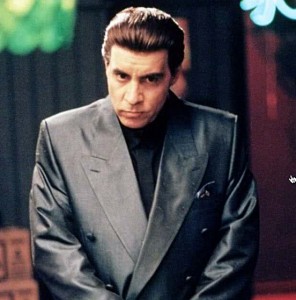 Steven returned to the E Street Band in 1999, right about the time he made his acting debut as the character Silvio Dante in HBO’s groundbreaking series The Sopranos. I sat, transfixed, watching the first episode, waiting to see Stevie appear in his signature headwrap, gypsy scarves and snakeskin boots (he withdrew from PETA because he couldn’t give up the leather). But where was he? I ran the VHS tape back to the beginning and watched it again. And I was gobsmacked to discover that Tony Soprano’s Mafia consigliere, the owner of the Bada Bing girlie bar, was none other than Steven Van Zandt — in a pompadour wig! He was now a respected TV star. In interviews, he humbly responded to praise by saying, “It’s the wig that’s doing the acting.”
Steven returned to the E Street Band in 1999, right about the time he made his acting debut as the character Silvio Dante in HBO’s groundbreaking series The Sopranos. I sat, transfixed, watching the first episode, waiting to see Stevie appear in his signature headwrap, gypsy scarves and snakeskin boots (he withdrew from PETA because he couldn’t give up the leather). But where was he? I ran the VHS tape back to the beginning and watched it again. And I was gobsmacked to discover that Tony Soprano’s Mafia consigliere, the owner of the Bada Bing girlie bar, was none other than Steven Van Zandt — in a pompadour wig! He was now a respected TV star. In interviews, he humbly responded to praise by saying, “It’s the wig that’s doing the acting.”
He once told a reporter, “I modeled the role [of Silvio] on The Sopranos after my real role in life with Bruce. You’d see Silvio have to deliver bad news, Tony Soprano would get totally angry, and guess what? That’s part of the job of being the consigliere, or being the best friend in real life.”
More recently, he’s getting rave reviews as the star of the Netflix series Lilyhammer, about a New York gangster who flees to a quiet town in Norway to start a new life. Steve, typecast? Fuggedaboudit!
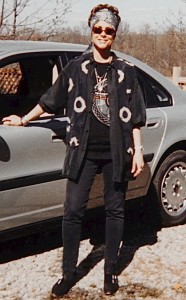 Since 2002, he’s been hosting a popular syndicated radio show called Little Steven’s Underground Garage. And in 2007 he created the Rock And Roll Forever Foundation, a non-profit “dedicated to the development, preservation, dissemination, and continuing support of rock and roll, past, present, and future.” It’s spawned a Rock and Roll High School program which features a free 40-chapter curriculum aimed at middle and high school students. But perhaps the accomplishment he’s most proud of is the music-industry activist group Artists United Against Apartheid that he formed in 1985 as an action against the Sun City resort in South Africa.
Since 2002, he’s been hosting a popular syndicated radio show called Little Steven’s Underground Garage. And in 2007 he created the Rock And Roll Forever Foundation, a non-profit “dedicated to the development, preservation, dissemination, and continuing support of rock and roll, past, present, and future.” It’s spawned a Rock and Roll High School program which features a free 40-chapter curriculum aimed at middle and high school students. But perhaps the accomplishment he’s most proud of is the music-industry activist group Artists United Against Apartheid that he formed in 1985 as an action against the Sun City resort in South Africa.
People often ask me which rock star I’d most like to meet. They expect me to say Bruce or Dylan or Ringo or Keith. And I always surprise them when I say Little Steven Van Zandt. Why? His brain is an encyclopedia of rock, and I could devour its pages till the cows come home. He’s my mahatma of music. Man, would I love to ride cross-country with this guy, talking rock-n-roll the whole way and sharing our mutual love of everybody from Bill Haley to Blue Cheer, from Nazz to the Knickerbockers. (Oh, and did I mention that I often dress “Stevie-style” when I attend Springsteen shows?) Right from the start – to quote a Bruce song – Steve and I liked the same music, we liked the same bands, we liked the same clothes. A long lost sibling, perhaps? Hmmm, did my mom ever have a boyfriend in the Garden State?
Yep, me and Stevie drank the same Kool-Aid, alright.
Here’s struttin’ Steve, looking absolutely bitchin’ in his purple glad-rags, performing “Under the Gun” for a German audience in 1982. The Italian boy baptized Steven Lento became Steven Van Zandt when his step-father adopted him. And how’s this for cool: he asked Reverend Richard Penniman – AKA Little Richard – to preside over his marriage to Maureen Santoro in 1982! Bruce, of course, was best man.
© Dana Spiardi, Nov 22, 2014
]]>
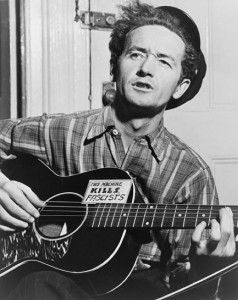 In 1945 Woody Guthrie married his second wife, Marjorie Greenblatt Mazia, who had been a dancer with the Martha Graham Dance Company in New York. The two met when a choreographer from the troupe developed a dance based on one of Woody’s many whimsical protest songs. Marjorie’s mother just happened to be Aliza Greenblatt, a well-known Yiddish poet. She lived across the street from Woody and Marjorie on Mermaid Avenue in Brooklyn’s Coney Island. Woody and his mother-in-law, known to all as Bubbie, enjoyed a close, collaborative relationship. They shared similar interests – anti-fascism, pro-labor activism, folk lore – and a desire to promote social justice through music and art. Aliza played a large role in the Guthrie household, babysitting the kids and serving Friday night Sabbath dinners. She inspired Woody’s deep appreciation for Jewish history and culture. He likened the struggles of the Jews to those of his fellow Okies and other oppressed people.
In 1945 Woody Guthrie married his second wife, Marjorie Greenblatt Mazia, who had been a dancer with the Martha Graham Dance Company in New York. The two met when a choreographer from the troupe developed a dance based on one of Woody’s many whimsical protest songs. Marjorie’s mother just happened to be Aliza Greenblatt, a well-known Yiddish poet. She lived across the street from Woody and Marjorie on Mermaid Avenue in Brooklyn’s Coney Island. Woody and his mother-in-law, known to all as Bubbie, enjoyed a close, collaborative relationship. They shared similar interests – anti-fascism, pro-labor activism, folk lore – and a desire to promote social justice through music and art. Aliza played a large role in the Guthrie household, babysitting the kids and serving Friday night Sabbath dinners. She inspired Woody’s deep appreciation for Jewish history and culture. He likened the struggles of the Jews to those of his fellow Okies and other oppressed people.
More than thirty years after Woody’s death, his daughter Nora began to dig through The Woody Guthrie Archives, resurrecting the Jewish-themed lyrical poems he had written in 1940s and 50s. These include poems such as “Honeyky Hanukah Time,” written in typically playful Woody style:
It’s Honeyky Hanukah, shaky my hand,
My candles are burning all over this land,
To light the dark road for the man passing by,
It’s Honeyky Hanukah time.
It’s Honeyky Hanukah, kissy my cheek,
The light in my window it burns for a week,
I’ll open my present and take a little peek,
It’s Honeyky Hanukah time.
Nora decided to have Woody’s words set to music, and asked The Klezmatics, an eclectic klezmer band, to carry out the project. The resulting songs were the highlight of a 2003 concert, ”Holy Ground: The Jewish Songs of Woody Guthrie,” staged on the first night of Hanukkah at the legendary 92nd Street Y in New York. In 2010, The Klezmatics released the songs on their album “Wonder Wheel,” which the Grammy Award for Best Contemporary World Music Album at the 49th Grammy awards.
 Nora wants to make sure that these songs cast her father in a much broader light. She once told an interviewer, “He was a poet and lyricist who wrote about everything. I don’t want to see him turned into a freeze-dried, Dust Bowl icon representing a narrow version of what somebody thinks he was. These songs are just one more facet of his work that will add to a fuller picture of him as a songwriter.”
Nora wants to make sure that these songs cast her father in a much broader light. She once told an interviewer, “He was a poet and lyricist who wrote about everything. I don’t want to see him turned into a freeze-dried, Dust Bowl icon representing a narrow version of what somebody thinks he was. These songs are just one more facet of his work that will add to a fuller picture of him as a songwriter.”
If I had it my way, every grade school child in America would be required to spend an entire week immersed in the life and times of Woodrow Wilson Guthrie. He was one of America’s purest souls and most accomplished folk heroes — an artist, activist, diarist, humorist, humanitarian, and rabble-rouser. If you’re a lover of music, if you believe that music has the power to incite, to inspire, and to change the world, please remember Woody today on his 103rd birthday.
Here are some delightful lyrics from another of Woody’s Jewish-themed poems, “Mermaid Avenue:”
Mermaid Avenue that’s the street
Where the lox and bagles meet,
Where the hot dog meets the mustard
Where the sour meets the sweet;
Where the beer flows to the ocean
(Where the halvah meets the pickle)
Where the wine runs to the sea;
Why they call it Mermaid Avenue
That’s more than I can see.
Please watch this beautiful video of my favorite Woody song, “So Long, It’s Been To Know You,” from the Library of Congress recording:
© Dana Spiardi, July 14, 2015
]]>
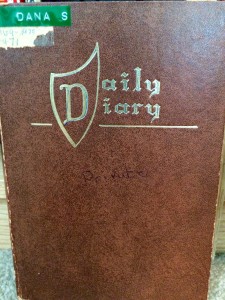 Later, when I got my Smith-Corona for Christmas of 1972 and learned to type, I found that I could more quickly capture my thoughts and emotions, which by now were gushing like torrents. I looked forward to that private period before bedtime, when I would sit in my room uninterrupted and bare my soul. (Today this is known as journaling and people get rich writing books and teaching seminars on how to do it.) I listened to my records as I wrote, and began each entry with a song lyric, like this one that expressed my adolescent confusion:
Later, when I got my Smith-Corona for Christmas of 1972 and learned to type, I found that I could more quickly capture my thoughts and emotions, which by now were gushing like torrents. I looked forward to that private period before bedtime, when I would sit in my room uninterrupted and bare my soul. (Today this is known as journaling and people get rich writing books and teaching seminars on how to do it.) I listened to my records as I wrote, and began each entry with a song lyric, like this one that expressed my adolescent confusion:
January 30, 1977
Wake up late without a smile
Telephone rings
You run like a child
On the street, into the day
The people I meet
Have nothing to say
–“Soul of the Sea” by Ann and Nancy Wilson of Heart, 1976
Yes, I related to Anne. We both had dark hair and eyes. We were both yearning to be free. We both wrote as a form of escape and self-therapy. And we seemed to have the same character; from all I’ve read, she was outspoken, opinionated, moody, and high-spirited. In other words, quite a handful, just like me.
And we were soul mates. Anne’s diary entry from April 5, 1944, completely captures the dreams and doubts that consumed me as a 13-year-old. It’s as if I’d written every word of it myself.
 I finally realized that I must do my schoolwork to keep from being ignorant, to get on in life, to become a journalist, because that’s what I want! I know I can write…but it remains to be seen whether I really have talent…
I finally realized that I must do my schoolwork to keep from being ignorant, to get on in life, to become a journalist, because that’s what I want! I know I can write…but it remains to be seen whether I really have talent…
And if I don’t have the talent to write books or newspaper articles, I can always write for myself. But I want to achieve more than that. I can’t imagine living like Mother, Mrs. van Daan and all the women who go about their work and are then forgotten. I need to have something besides a husband and children to devote myself to! …
I want to be useful or bring enjoyment to all people, even those I’ve never met. I want to go on living even after my death! And that’s why I’m so grateful to God for having given me this gift, which I can use to develop myself and to express all that’s inside me!
When I write I can shake off all my cares. My sorrow disappears, my spirits are revived! But, and that’s a big question, will I ever be able to write something great, will I ever become a journalist or a writer?
It’s the question she poses in that last line that I still ponder daily: will I ever be able to write something great? I know that’s an ego-driven preoccupation, but aren’t all writers egocentric in their need to be read, in their desire (in Anne’s words), to be useful or bring enjoyment to all people? Today, I still have the ghost of the writer’s self-doubt that plagued Anne. Every time I finish an article for this blog, the worries begin: What if I can’t write another one? What if I run out of ideas or my abilities dry up? This isn’t necessarily a bad thing. It keeps me working and striving to improve. Bruce Springsteen has expressed these same sentiments time and again. “Have iron-clad confidence; but doubt — it keeps you awake and alert,” he once told a group of aspiring musicians.
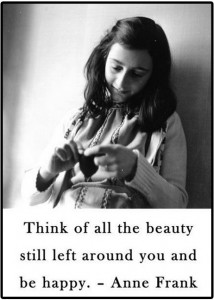 My teenage diary was filled with expressions of happiness and pride over incidents ranging from special (Mr. S. told me to keep writing and I’ll be published by the time I’m 25! – March 10, 1976) to superficial (today I wore my green corduroy outfit; it always brings me luck! – December 15, 1973).
My teenage diary was filled with expressions of happiness and pride over incidents ranging from special (Mr. S. told me to keep writing and I’ll be published by the time I’m 25! – March 10, 1976) to superficial (today I wore my green corduroy outfit; it always brings me luck! – December 15, 1973).
And more often than not, my pages were full of hopeless, ugly thoughts (I really don’t see that anything good will ever, ever happen to me in the future – February 3, 1977). Today, reading those rants of self pity, I feel foolish as I compare my silly problems to those of Anne Frank’s. The world was crumbling around her, and still she managed to embrace a glimmer of hope. On July 15, 1944, she wrote:
It’s a wonder I haven’t abandoned all my ideals, they seem so absurd and impractical. Yet I cling to them because I still believe, in spite of everything, that people are truly good at heart. It’s utterly impossible for me to build my life on a foundation of chaos, suffering and death. I see the world being slowly transformed into a wilderness, I hear the approaching thunder that, one day, will destroy us too, I feel the suffering of millions. And yet, when I look up at the sky, I somehow feel that everything will change for the better, that this cruelty too shall end, that peace and tranquility will return once more.
Anne continued to write in her diary until the day she and her family were seized from their hideout in Amsterdam and sent to the Nazi death camps: her father Otto to Auschwitz and she and her sister and mother to the Liebau camp and later to Bergen-Belsen, where she died of typhus a few months before British soldiers liberated the camp in April 1945.
Like Anne, I will continue to write till my stoney end.
© Dana Spiardi, June 12, 2015
]]>

